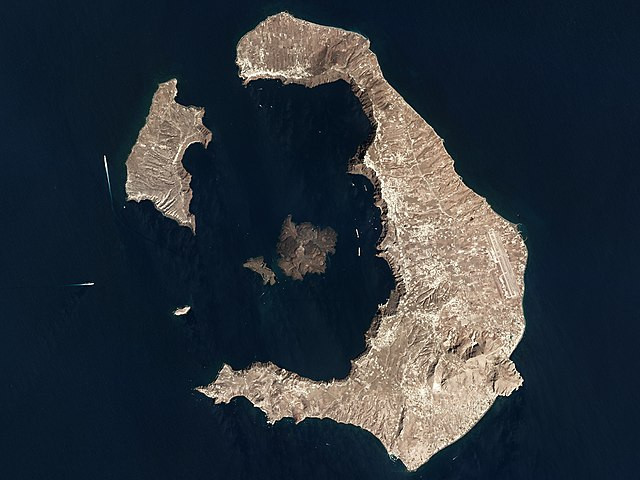The Greek government has declared a state of emergency in Santorini as a series of earthquakes continue to rattle the island, raising fears of a potential larger quake. The decision, announced Thursday by the Climate Crisis and Civil Protection Ministry, allows authorities to mobilize emergency resources until at least March 3 as they respond to the crisis.
The seismic activity, which began earlier this week, intensified Tuesday when a 5.3-magnitude earthquake struck less than 10 miles east of Santorini. According to the United States Geological Survey (USGS), the tremor was followed by multiple aftershocks, including a 4.7-magnitude quake. More than a dozen earthquakes have been recorded in the region since Monday, with magnitudes ranging from 4.0 to 5.3.
No injuries have been reported, but anxiety is mounting among residents and tourists. At least 11,000 people have already fled the island, with ferries and flights to Athens fully booked. "We are going to leave because I am afraid, there are constantly earthquakes," said Beni Ouklala, a 38-year-old worker on the island. "We have to leave for the kids, so the kids can calm down."
Despite the growing concerns, some locals are choosing to stay. "We will stay here, why should we leave? If something happens, it happens," said Eftichis Diamantopouulos, a 63-year-old tourist boat captain.
Authorities have shut down schools, issued warnings about landslide risks, and dispatched rescue teams to vulnerable areas. Residents have been advised to avoid ports and indoor gatherings as a precaution. Greek Prime Minister Kyriakos Mitsotakis visited the island on Friday to oversee emergency preparations. "I want to assure the residents of Santorini and the neighboring islands that the state mechanism is on their side," he said. "We hope this phenomenon ends quickly and the island fully returns to its normal pace."
Seismologists remain concerned about the unusual nature of the tremors. Rémy Bossu, Secretary-General of the European-Mediterranean Seismological Centre, warned that the strongest quake may still be ahead. "Days, or perhaps weeks" would be needed to evaluate the unusual tremors," he told CNN, adding that the pattern of increasing magnitude suggests they could be foreshocks to a larger seismic event.
Santorini, a volcanic island located at the intersection of the African and Eurasian tectonic plates, is no stranger to earthquakes. However, Bossu described the current activity as an "earthquake swarm," where seismic intensity increases over time rather than diminishing. "What you observe is a large earthquake followed by aftershocks that decrease with time in magnitude and frequency," he said. "Here, we observe a very different phenomenon."
The region last experienced a devastating earthquake in 1956, when a 7.7-magnitude tremor struck near Amorgos, triggering a tsunami that reached heights of 80 feet. That disaster killed 53 people and injured more than 100. While today's seismic activity is occurring northeast of Santorini and southwest of Amorgos, Bossu noted that the potential for a significant event remains.






